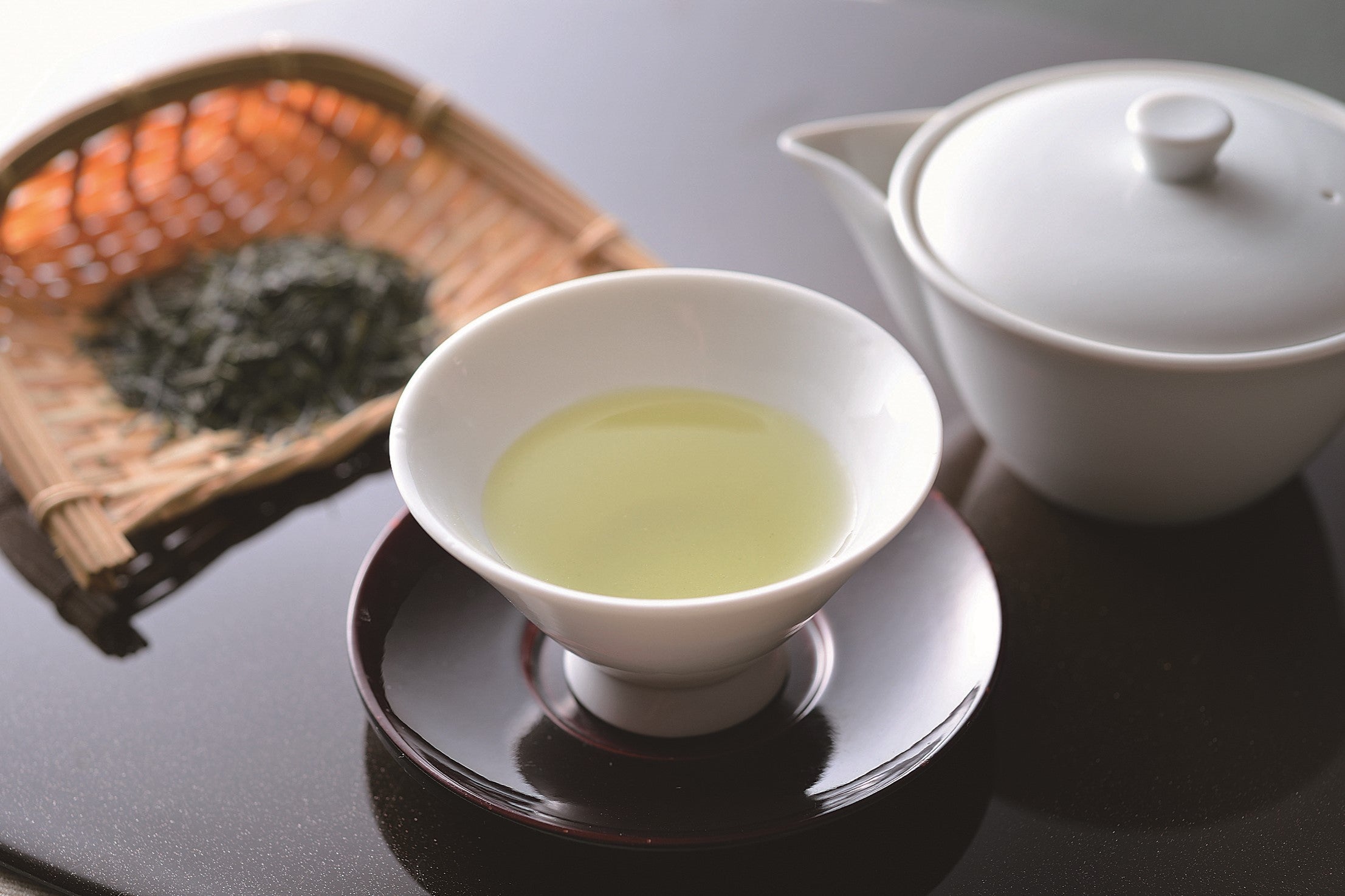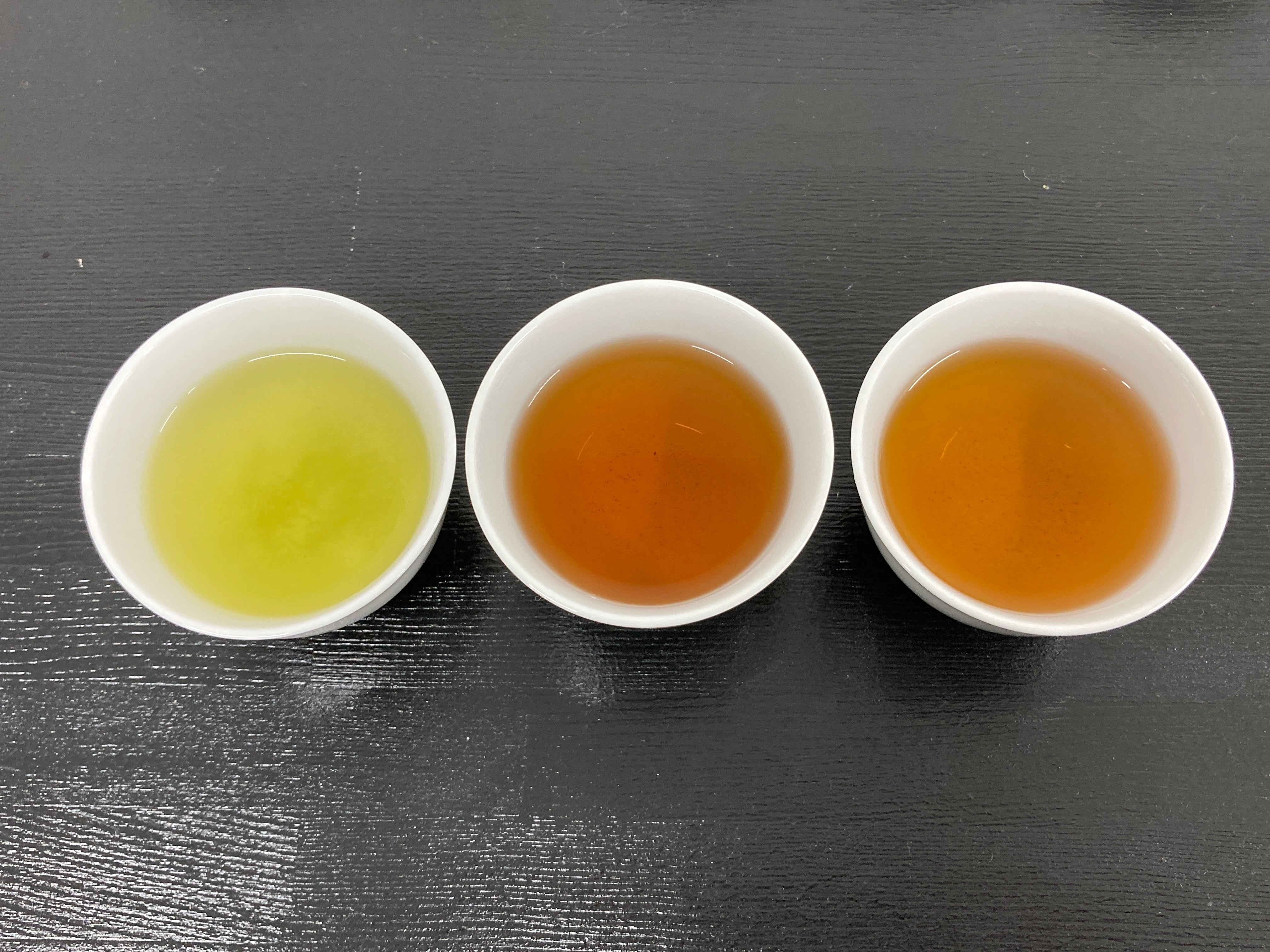
Nutrients in Tea
Tea was used as a medicine
One of the oldest Chinese medicine books is “Divine farmer’s Classic of Materia Medica”. The author, Shennong, ran through the mountains and fields, used his own body to examine the medicinal properties of the plants around him. It was said that each time he was poisoned, he chewed tea leaves to detoxify himself. The people were thus saved through medicinal discoveries, and Shennong came to be enshrined as the god of medicine. Thus, since ancient times, tea has been used as a medicine, even as an antidote, the Japanese expression 「お茶を一服」" a dose of tea " would come from this use.
In Japan, it is believed that tea has been drunk since at least the Nara period (710-784). However, during this period, tea was an extremely precious commodity. Then, during the Kamakura period in 1191, Eisai, a Japanese traveler and Buddhist priest, brought back from China tea seeds, cultivation and drinking methodsalong with Zen Buddhism of the Rinzai school which spread to all over the country.
In 1211, he wrote “Drinking Tea for Health”, called "Kissa Yojoki" in Japanese and is Japan's oldest book on tea. It begins with the words "Tea is an healing herbal elixir and a miracle against aging" and relates about the gathering, benefits and production methods of tea.
Indeed, the "Azuma Kagami" chronicle reports that when Minamoto no Sanetomo, the third shogun of the Kamakura Shogunate, was suffering from a hangover, Eisai presented "Kissa Yojoki" along with tea.
Click to see our premium selection
Main Nutrients in Tea
Tea contains many nutrients, among them we find catechin (polyphenol), caffeine, theanine (amino acid) and vitamins. Thanks to the science, their functions and their effectiveness have been highlighted and thus found that tea is a drink that contributes to our well-being.
Catechin is the main component of tea and is part of the polyphenol family. It is known to have a particularly strong antioxidant effect, and is expected to prevent mental disorder.
Caffeine: High-quality tea such as gyokuro and high-grade sencha contain a lot of it, and it decreases as the tea buds grow. It stimulates the central nervous system, therefore increases the ability of certain cognitive functions. It is also given diuretic properties, but be careful not to consume too much of it, it can strongly irritate the stomach.
Theanine accounts for more than half of the amino acids contained in tea. It is for example present in large quantities in gyokuro and matcha. Theanine concentration gradually decreases as the plant grows. It acts on the nerve cells of the brain as well as relaxes and calms down the effects of caffeine.
Tea is particularly rich in vitamin C and also contains vitamins E and A. Vitamin C is temperature-sensitive, however, it is protected by catechins in the tea thus resisting heat. Finally, as vitamins E and A are insoluble, it is possible to drink them with matcha (it is a powder) or to cook used tea leaves.
Functions and Effectiveness
The health benefits of tea would be due to the synergistic effects of the various substances. They are divided below into two categories: water-soluble substances and insoluble substances.
Water-soluble substances (20~30%)
|
Catechin (10~18%) |
Has a positive impact on cholesterol, blood pressure, blood sugar; also has antioxidant, antibacterial, anti-virus, anti-allergy attributes, etc. |
|
Complex tannins (0.4%) |
Antioxidant and anti-cancer |
|
Flavonoid (0.6~0.7%) |
Reinforces the vascular wall, antioxidant, anti-cancer, deodorant. |
|
Caffeine (3~4%) |
Stimulates the central nervous system, fights drowsiness and boosts metabolism. |
|
Polysaccharides (0.6%) |
Helps lower blood sugar. |
|
Vitamin C (150~250%) |
Contributes to the production of collagen and is also antioxidant as well as anti-scurvy. Participates in the prevention of colds, cataracts, and the improvement of the immune system. |
|
Vitamin B2 (1.4mg%) |
Antioxidant |
|
Theanine (0.6~2%) |
Regulates the functioning of the brain and nervous systems, relaxing effect. |
|
γ-Aminobutyric acid (0.1~0.2%) |
Lowers blood pressure and regulates the brain and nervous functioning. |
|
Saponin (0.1%) |
Anti-asthmatic, antibacterial, hypotensive (reduces high blood pressure). |
|
Flavouring (1~2%) |
Various effects depending on the essential oils used: aromatherapy. |
|
Dietary fibres (3~6%) |
Promotes the elimination of bile acids and reduces cholesterol levels. |
|
Minerals (3~4%) |
Zinc: Taste disorder prevention, dermatitis and fight against immune deficiency. Fluorine: Prevention of dental caries. Manganese, copper, zinc, selenium: Antioxidant. |
Insoluble substances (70~80%)
|
Dietary fiber (30~40%) |
Reduces the risk of cancer and glycaemia. |
|
Proteins (around 24%) |
Characteristics: Proteins are composed of 9 essential amino acids and 11 non-essential amino acids. Proteins are chains of amino acids that can enter into the composition: muscles, blood, nerves, etc. They are also the basis of numerous hormones, enzymes and antibodies. |
|
Beta-Carotene (13~29mg%) |
Antioxidant, anticancer, immune function stimulant, source of vitamin A. |
|
Vitamin E (25~70mg%) |
Contributes to the strengthening of the immune system and blood circulation as well as to the prevention of hemolysis, cancer, diabetes, cataract. It would also fight against the oxidation of unsaturated lipids (lipid peroxidation). |
|
Chlorophyll (0.6~1.0mg%) |
Deodorizing effect |
|
Minerals (2~3%) |
Antioxidants: manganese, copper, zinc, selenium |
* The content of these substances varies depending on the type of tea, cultivation method, manufacturing method, extraction method, and other conditions.
Main Substances Contained in Tea
The content of substances by type of tea is as follows (unit: %). Those with the highest rate are in red, and those with the lowest are in blue.
|
Categories |
Caffeine |
Catechin (ECG) |
Catechin (EC) |
Catechin (EGCG) |
Catechin (EGC) |
Catechin (total) |
Amino acid |
|
Gyokuro (high-grade) |
4.04 |
1.35 |
0.36 |
6.65 |
1.68 |
10.04 |
5.36 |
|
Sencha |
2.87 |
2.47 |
0.74 |
8.16 |
2.77 |
14.14 |
2.70 |
|
Sencha (high-grade) |
2.8 |
1.76 |
0.91 |
7.53 |
3.36 |
13.56 |
2.18 |
|
Matcha (high-grade) |
3.85 |
5.80 |
|||||
|
Bancha |
2.02 |
2.40 |
1.07 |
5.58 |
3.28 |
12.33 |
0.77 |
|
Hojicha |
1.93 |
1.56 |
0.40 |
5.00 |
1.36 |
8.32 |
0.20 |
|
Oolong tea |
3.87 |
1.16 |
0.33 |
3.60 |
1.01 |
6.10 |
1.04 |
|
Black tea |
3.92 |
0.67 |
4.02 |
- |
8.61 |
Click to see our Sencha Gyokuro Hojicha & Bancha
Data sources: General Assembly of Japanese Tea Industry Public Interest Association “Tea-Related Materials”, edited by Shizuoka Prefectural Chamber of Tea Industry “Tea in Shizuoka”.




Leave a comment
This site is protected by hCaptcha and the hCaptcha Privacy Policy and Terms of Service apply.